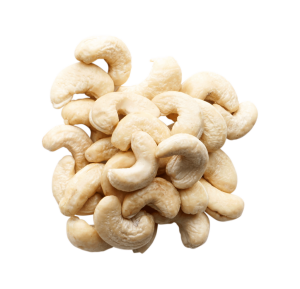Several novel functional peptides have been successfully extracted from plant storage proteins. This study investigated the degree of hydrolysis, peptide yield, amino acid constituents, angiotensin converting enzyme (ACE), alpha amylase inhibitory and in vitro antioxidant activities of cashew (Anarcardium occidentale) nut proteins (CNP) hydrolysates (CNPHs). Cashew nut proteins (albumin and globulin) were hydrolysed using pancreatin, Alcalase and trypsin. The peptide yield and degree of hydrolysis (DH) of CNP by pancreatin (75.69 ± 0.84%; 37.39 ± 0.31) was significantly higher than those by Alcalase (61.67 ± 0.55%; 23.87 ± 0.23) and trypsin (43.33 ± 0.45%; 11 ± 0.15). The inhibition of ACE by albumin and globulin hydrolysates was concentration dependent. At 1.2 mg/mL, ACE-inhibitory activity of pancreatic cashew nut globulin (CNGH) hydrolysate (51.65 ± 1.2%) was significantly higher than those of Alcalase (34.603 ± 0.65%) and tryptic (29.92 ± 0.73%) CNGHs. Cashew nut albumin hydrolysate (CNAH) demonstrated concentration-dependent alpha-amylase inhibition (IC50 0.17 ± 0.02-0.41 ± 0.021 mg/mL). The order of inhibition was tryptic > Alcalase > pancreatic CNAHs. The pancreatic hydrolysates of both albumin and globulin fractions displayed the highest DPPH antioxidant activity, while pancreatic CNAH was the most potent superoxide anion scavenger. These findings therefore posit that cashew nut globulin and albumin hydrolysates are laden with useful bioactive peptides that may be further explored for regulation of blood pressure and sugar in hypertensive and diabetic in vivo models.
